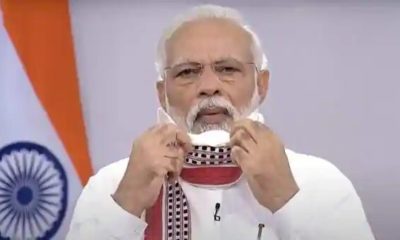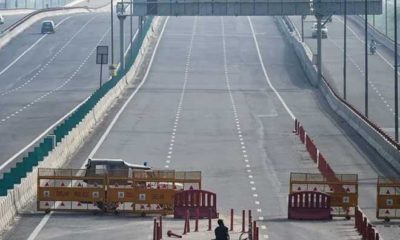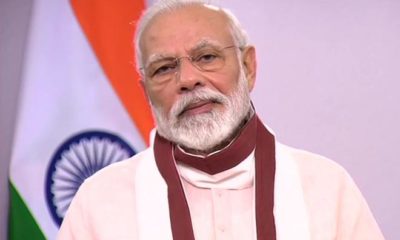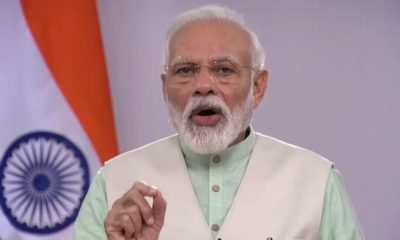Feature
Modi and soft power: No substitute for traditional diplomacy

When the chief minister of gujarat became the prime minister of India, the personal interest he demonstrated in foreign affairs confounded everyone. But what caught everyone by surprise was the ease with which he brought his personal style to bear on his interaction with world leaders. Establishing a one-to-one rapport became his distinctive hallmark.
Whether through the bear hug or the ‘shirt-fronting’ joke with the Australian prime minister or the first name reference and the ‘chai pe charcha’ on the Hyderabad House lawns with US President Barack Obama, Modi broke with convention and protocol.
This was soft power at its best. Like a master magician, he demonstrated how soft power could, most certainly, be an effective instrument of foreign policy. Indeed, Indian foreign policy, under his brief stewardship, is already seeing an unprecedented resurgence. After almost five years of standstill governance under UPA-II, when the India charm rapidly dissipated, there is now renewed interest in an India under Modi.
However, soft power diplomacy is successful only when it is sustainable and necessarily rests on certain basic principles:
First, soft power must complement and not attempt to replace traditional diplomacy.
Bear hugs and bonhomie set the tone between world leaders but do not become a substitute for the hard work and behind-the-scene fine-tuning that translates vision and expectation into mutually agreed action areas.
Joint statements impress but all they convey is intent. It is agreements that set out how intent is operationalized. Without these details, intent is rhetoric.
Take the case of the recent India-US “understanding” on nuclear liability, which has been hailed as a “breakthrough”. Clarity continues to be elusive. US companies have expressed “scepticism” on what precisely the contours of the “breakthrough” are. The Russian ambassador to India has gone on record to refer to the “breakthrough” as a coupling of “euphoria” with “promises”.
This is seriously damaging and occurred because soft power far exceeded what traditional diplomacy could deliver.
Second, soft power only conveys a signal; it is not the entire story.
Take Modi’s recent visit to Australia. India-Australia relations were under-performing and moribund, mired in old suspicions. Modi wished to convey that he was committed to changing that scenario and in making their relations a core element of his foreign policy. His extraordinary efforts won hearts and dramatically changed perceptions.
But his words are yet to be translated into any serious agreements, whether on investments, two-way trade, security or defence cooperation.
It is the same story vis-à-vis the US. Even on the ease of doing business, which he publicly assured American business of, there is no clear outline on the reforms undertaken or likely to be undertaken.
Modi’s soft power outreach, in other words, was not in tandem with the details that traditional diplomacy first needed to iron out with American and Australian counterparts. Indeed, it was so many steps ahead of traditional diplomacy that it gave the impression that too many unrealistic promises were being made.
Third, soft power can convey unintended and wrong signals.
The reference to the South China Sea dispute during the Obama-Modi talks outraged Beijing. Was this a strategic decision to set the tone for Modi’s forthcoming visit to China? This is debatable but surely it needs serious introspection as to whether India is in a position to confront Beijing in the South China Sea territorial dispute. If it is not, this forceful and unprecedented reference was nothing but avoidable rhetoric.
Fourth, credible soft power wins friends; it does not alienate.
Apart from the inappropriate pinstripe suit, the BJP has run a professional PR campaign. Yet, there were two serious blunders in the recent Delhi elections: first, the reference to Arvind Kejriwal’s caste and second, describing persons from the northeast as “immigrants” (and then, to compound matters, in saying that it was a typo error). Were these gaffes? Or were they, in fact, how they actually perceived others?
Perceptions matter. The mishandling of the church desecrations and the consequent silent protest by the Christian community on the eve of the Delhi elections are a cause for serious concern, as indeed are the provocative statements, by so-called “fringe elements”, espousing Hindu supremacy. The prime minister’s silence is particularly worrying because it is perceived as an implicit legitimization of the alienation.
India is at a historic crossroads and this might well be a transformational phase in our foreign policy. All eyes are on India because it could be the game changer in the world economy and a crucial pillar in the new security architecture. It is an extraordinary opportunity for the prime minister.
However, Prime Minister Modi needs to recognize that the magic of soft power works only when it carries traditional diplomacy along. If not, it could well see the erosion of trust. Magic, after all, is only fiction.
Entertainment
Meghalaya Reserves Legalized Gambling and Sports Betting for Tourists

The State Scores Extra High on Gaming-Friendly Industry Index
Meghalaya scored 92.85 out of 100 possible points in a Gaming Industry Index and proved to be India’s most gaming-friendly state following its recent profound legislation changes over the field allowing land-based and online gaming, including games of chance, under a licensing regime.
The index by the UK India Business Council (UKIBC) uses a scale of 0 to 100 to measure the level of legalisation on gambling and betting achieved by a state based on the scores over a set of seven different games – lottery, horse racing, betting on sports, poker, rummy, casino and fantasy sports
Starting from February last year, Meghalaya became the third state in India’s northeast to legalise gambling and betting after Sikkim and Nagaland. After consultations with the UKIBC, the state proceeded with the adoption of the Meghalaya Regulation of Gaming Act, 2021 and the nullification of the Meghalaya Prevention of Gambling Act, 1970. Subsequently in December, the Meghalaya Regulation of Gaming Rules, 2021 were notified and came into force.
All for the Tourists
The move to legalise and license various forms of offline and online betting and gambling in Meghalaya is aimed at boosting tourism and creating jobs, and altogether raising taxation revenues for the northeastern state. At the same time, the opportunities to bet and gamble legally will be reserved only for tourists and visitors.
“We came out with a Gaming Act and subsequently framed the Regulation of Gaming Rules, 2021. The government will accordingly issue licenses to operate games of skill and chance, both online and offline,” said James P. K. Sangma, Meghalaya State Law and Taxation Minister speaking in the capital city of Shillong. “But the legalized gambling and gaming will only be for tourists and not residents of Meghalaya,” he continued.
To be allowed to play, tourists and people visiting the state for work or business purposes will have to prove their non-resident status by presenting appropriate documents, in a process similar to a bank KYC (Know Your Customer) procedure.
Meghalaya Reaches Out to a Vast Market
With 140 millions of people in India estimated to bet regularly on sports, and a total of 370 million desi bettors around prominent sporting events, as per data from one of the latest reports by Esse N Videri, Meghalaya is set to reach out and take a piece of a vast market.
Estimates on the financial value of India’s sports betting market, combined across all types of offline channels and online sports and cricket predictions and betting platforms, speak about amounts between $130 and $150 billion (roughly between ₹9.7 and ₹11.5 lakh crore).
Andhra Pradesh, Telangana and Delhi are shown to deliver the highest number of bettors and Meghalaya can count on substantial tourists flow from their betting circles. The sports betting communities of Karnataka, Maharashtra, Uttar Pradesh and Haryana are also not to be underestimated.
Among the sports, cricket is most popular, registering 68 percent of the total bet count analyzed by Esse N Videri. Football takes second position with 11 percent of the bets, followed by betting on FIFA at 7 percent and on eCricket at 5 percent. The last position in the Top 5 of popular sports for betting in India is taken by tennis with 3 percent of the bet count.
Local Citizens will Still have Their Teer Betting
Meghalaya residents will still be permitted to participate in teer betting over arrow-shooting results. Teer is a traditional method of gambling, somewhat similar to a lottery draw, and held under the rules of the Meghalaya Regulation of the Game of Arrow Shooting and the Sale of Teer Tickets Act, 2018.
Teer includes bettors wagering on the number of arrows that reach the target which is placed about 50 meters away from a team of 20 archers positioned in a semicircle.
The archers shoot volleys of arrows at the target for ten minutes, and players place their bets choosing a number between 0 and 99 trying to guess the last two digits of the number of arrows that successfully pierce the target.
If, for example, the number of hits is 256, anyone who has bet on 56 wins an amount eight times bigger than their wager.























